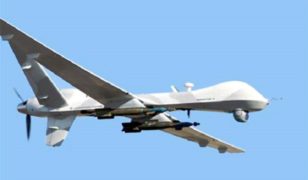Rockwell Collins successfully completes Common Range Integrated Instrumentation System risk reduction flight
 In cooperation with the Atlantic Test Range (ATR) at Patuxent River, Maryland, Rockwell Collins of Cedar Rapids, IA announced July 14 that it performed the first live, risk-reduction flight using production form, fit, function F/A-18 airborne and ground equipment from the Common Range Integrated Instrumentation System (CRIIS).
In cooperation with the Atlantic Test Range (ATR) at Patuxent River, Maryland, Rockwell Collins of Cedar Rapids, IA announced July 14 that it performed the first live, risk-reduction flight using production form, fit, function F/A-18 airborne and ground equipment from the Common Range Integrated Instrumentation System (CRIIS).
The CRIIS program fulfills critical Department of Defense (DoD) requirements to provide Time, Space, Position Information (TSPI), additional platform test data, and employs a more robust, spectrally efficient data link including multiple independent levels of security (MILS). The MILS encryption recently completed certification on the program, and is capable of simultaneously protecting four levels of Top Secret through Unclassified data flowing between aircraft and ground components.
“This flight demonstrates that the production equipment is real and can hook into existing military systems,” said Tommy Dodson, vice president and general manager of Surface Solutions for Rockwell Collins. “We are done with development and are on track to complete our testing this year and start production in 2016. The next generation of secure, common test and training instrumentation is ready.”
Rockwell Collins is the prime contractor and systems integrator for the next-generation military test range system that will replace the Advanced Range Data System (ARDS) currently in use at major U.S. military test ranges. CRIIS equipment will support a variety of platforms, including advanced fifth-generation aircraft, and implements the DoD’s vision of common test and training infrastructure for improved operational realism.
Rockwell Collins and CRIIS System Program Office (SPO) personnel worked with ATR personnel to take advantage of a previously planned range maintenance flight. The following key functions were demonstrated on this flight:
- Data link network ingress after takeoff
- Ground-to-air uplink of GPS correction messages and network services from multiple data link towers
- Air-to-ground downlink of TSPI messages
- More than 120 nautical mile line-of-sight data link connectivity until curvature of the earth blocked the signal
- The ability to automatically rejoin the data link network when back in sight of the data link tower
- Message routing between the ATR control center, through the existing ground networks, and between CRIIS ground and airborne nodes
- ATR control room real-time monitoring of both ARDS and CRIIS position data
- End-to-end system control and data flow over CRIIS equipment, into ATR’s range data system, and displayed along with other data at the ATR Range Control Center
The air-cooled instrumentation package used in this flight is internal carriage to the F/A-18, and can be rack mounted in other aircraft. The system also includes pod and F-35 internal mount airborne configurations, as well as multi-level secure ground equipment. This provides telemetry from the aircraft or insertion of computer generated threats into an aircraft weapon system to create a more realistic operational environment for the aircraft or pilot.
Source: Rockwell Collins







